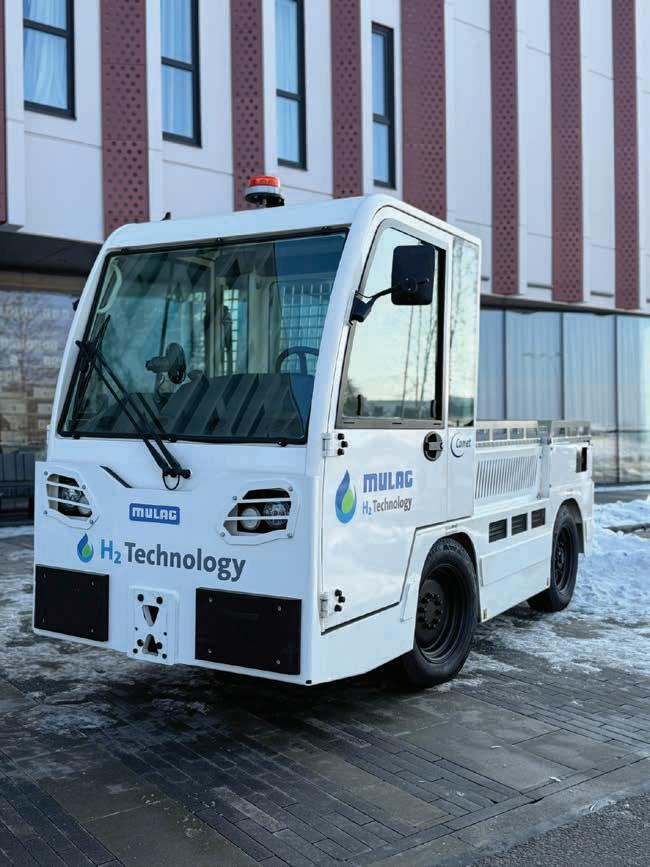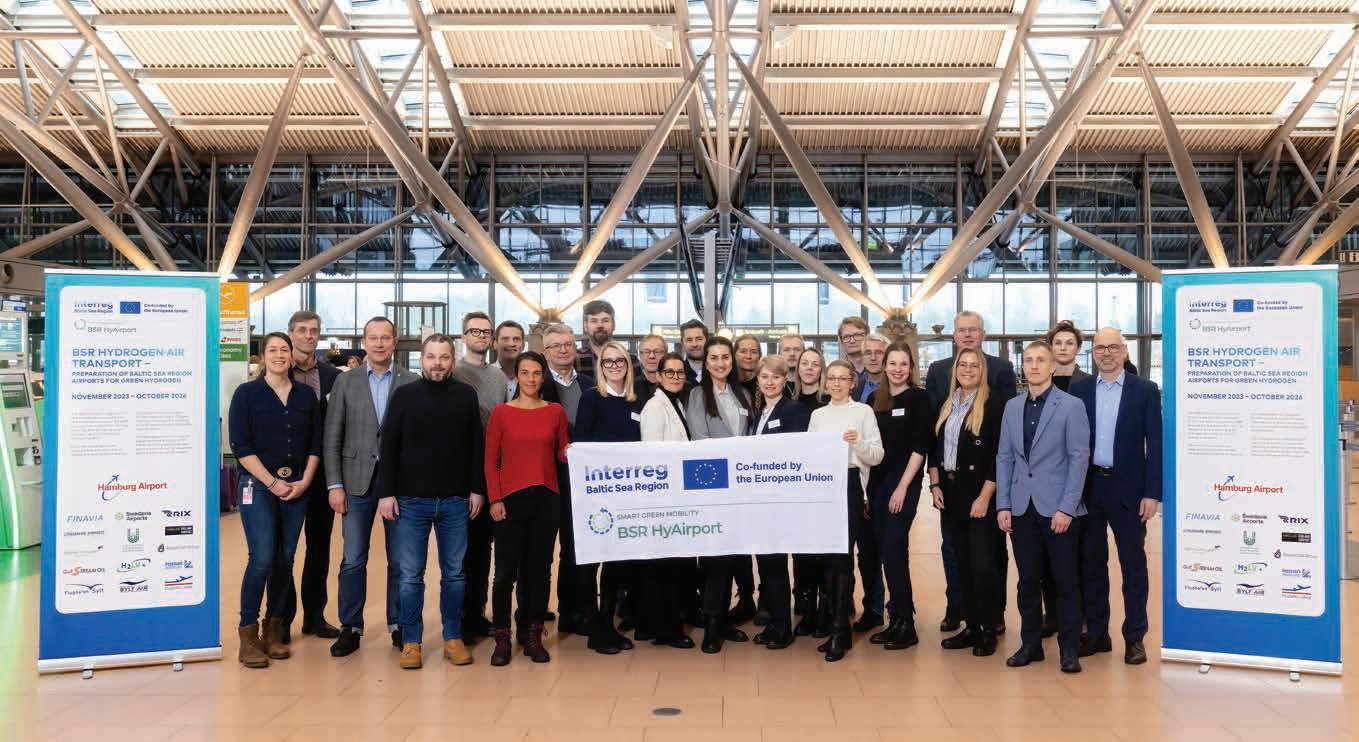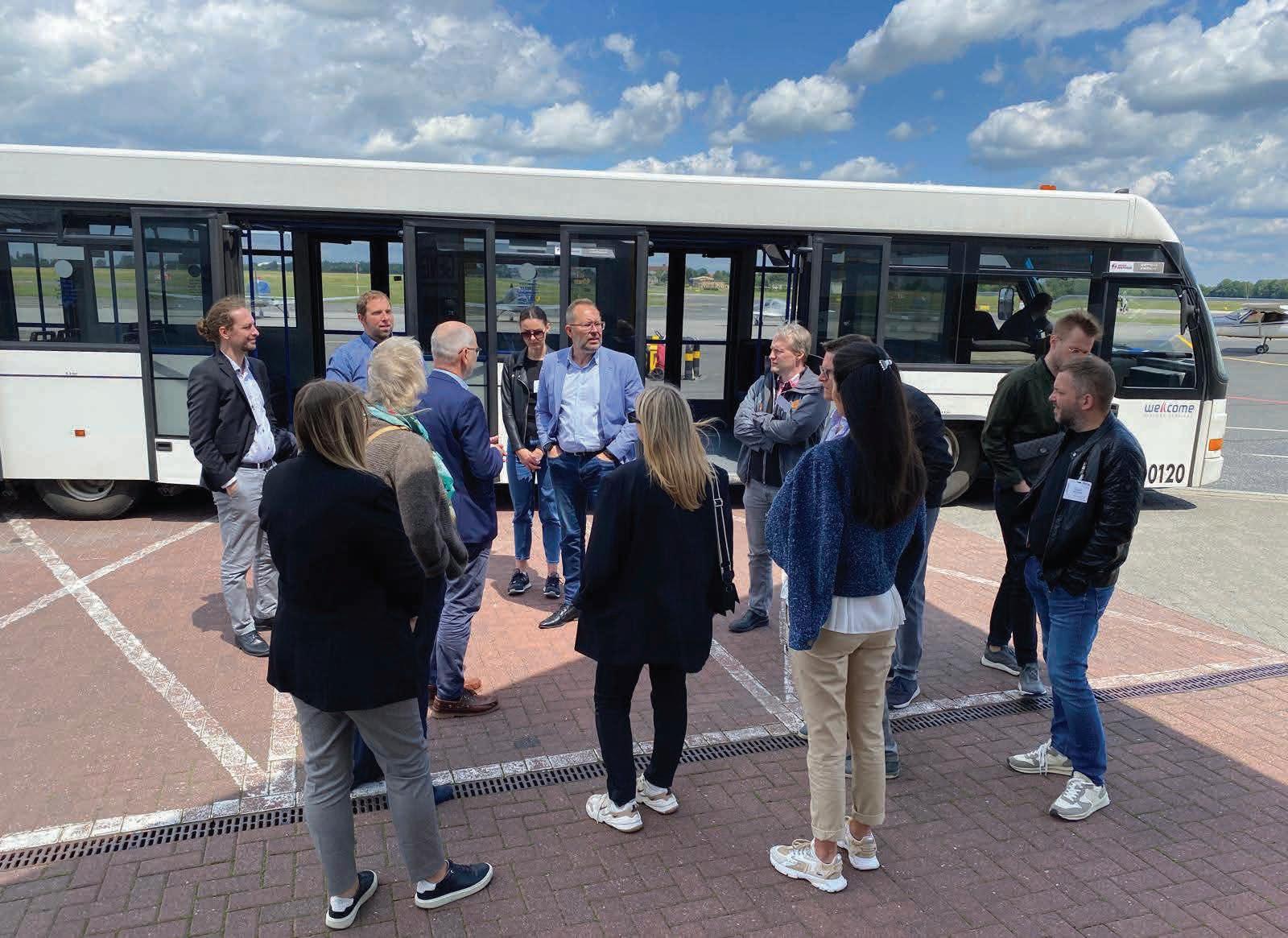

Flying on Hydrogen

Hydrogen is poised to revolutionize regional air travel. The BSR HyAirport project, led by Hamburg Airport and partners from seven countries, is paving the way for hydrogen-powered flights and ground operations. Julian Klaaßen, Deputy Head of the Environmental Department at Hamburg Airport, explains how airports are preparing for this clean energy transition and why collaboration is key.
Aviation has long relied on kerosene, the conventional jet fuel that has powered everything from short domestic hops to long-haul international flights. But with the growing urgency of climate change and increasing pressure to decarbonize the transport sector, the search for cleaner, more sustainable alternatives has taken flight. One of the most promising contenders is hydrogen — a fuel with the potential to transform not only how aircraft are powered, but how airports operate. The BSR HyAirport project, launched in November 2023 and funded by the Interreg Baltic Sea Region Programme, aims to prepare airports across Northern Europe for this hydrogen-powered future, laying the groundwork for a new era of lowemission regional aviation.
Julian Klaaßen, who leads the project from Hamburg Airport, explains that the idea originated from a desire to connect airports using hydrogen-fueled flights.
“We realized that the perception and the knowledge about hydrogen in aviation varied between countries,” he says. “Therefore we considered a joint effort to develop solutions and to facilitate the creation of networks for future GH2 flying with our partners.”
A New Era of Clean Aviation
The project focuses on gaseous hydrogen, chosen because it can be implemented more quickly than liquid hydrogen, which is still years away from practical use in aviation. Hydrogen, when used in fuel cells or combustion engines, produces zero CO2 emissions at the point of use, making it an ideal candidate for regional aviation, where smaller planes operate over shorter distances.
At present, all commercial aircraft run on kerosene, a fossil fuel. While Sustainable Aviation Fuels (SAFs) are emerging, Klaaßen notes they still produce some emissions.
“Hydrogen offers a cleaner solution, especially for smaller planes, which could be completely climate-neutral,” he says.
The project targets short-haul routes first — often the most polluting yet the most adaptable — with the hope of triggering what Klaaßen calls a “small revolution in regional flying.”

The BSR HyAirport project is built around three pillars: preparing solutions by assessing legal, technical, and supply chain requirements; piloting hydrogen-powered equipment and a demonstration flight between Rotterdam and Hamburg with a 10-seater ZeroAvia aircraft; and transferring knowledge by creating a practical “toolbox” to help other airports adopt hydrogen based on their local context.
Demonstration Flight: Pioneering Hydrogen in the Sky
A key milestone of the project is the planned demonstration flight at the end of 2026, pending aircraft certification. This flight will connect Rotterdam and Hamburg using a retrofitted 9–10 seat aircraft powered by a ZeroAvia ZA600 engine, operating on 350 bar gaseous hydrogen. This initiative is supported by overlapping efforts from BSR HyAirport,

the Green Corridor Hamburg–Rotterdam, and a Memorandum of Understanding between Rotterdam Airport and ZeroAvia.
The demonstration flight aims to prove the viability of hydrogen in regional air transport and highlight the potential for broader commercial use. “This flight will be a tangible step towards hydrogen-powered aviation,” Klaaßen says. “It’s not just theoretical anymore.” Besides this demonstrational flight, the partnership works on more flights to other locations as well.
To support these efforts, the project is conducting ground tests in real-world conditions. A recent trial at Riga Airport evaluated airport equipment performance, and further winter-specific testing is underway in Helsinki and Tallinn — key for understanding hydrogen’s behavior in cold climates. These tests will inform practical guidelines, safety protocols, and future deployment strategies.
As Klaaßen notes, the ground tests aren’t just technical exercises — they generate crucial learning for long-term adoption. In Helsinki, for example, testing hydrogenpowered winter equipment addresses a major fuel consumption challenge during harsh weather. Collecting data from these scenarios helps shape training protocols, safety procedures, and performance expectations for future users.
The toolbox will enable airports to assess whether producing hydrogen on-site or sourcing it externally is more feasible, taking into account factors such as available space, electricity costs, and regulatory conditions. It provides guidance based on input data to help identify the most practical solutions for each airport.
Challenges, Cooperation, and the Road Ahead
Despite the promise, challenges remain. The cost and availability of green hydrogen are significant obstacles, especially when moving from pilot to full-scale operations. In addition, national legislation around hydrogen use at airports is often inconsistent or incomplete, which the project aims to address through a legal feasibility study across partner countries.

Equally important is safety. Hydrogen is highly flammable, but its behavior is fundamentally different from kerosene — hydrogen vapor rises, kerosene vapor sinks, and their ignition energies differ. Adapting airport protocols and retraining personnel is critical for safe implementation. As Klaaßen puts it, “aviation and airports are built around kerosene. Now, we have to reimagine those systems around a new kind of fuel.”
As the project nears its halfway point, Klaaßen remains optimistic. “We’re building something that could change aviation. It’s challenging, but incredibly exciting.”

Project Objectives
The BSR HyAirport project aims to facilitate the early adoption of this key technology in the BSR by preparing airports for storing, handling, and delivering of green hydrogen as a future energy source in aviation.
Project Funding
This project is co-funded by the European Union Interreg Baltic Sea Region Programme under the project number: #C054 BSR HyAirport.
Project Partners
“The project’s demonstration flight, powered by a ZeroAvia ZA600 engine, marks a milestone for green aviation in Europe.”
Infrastructure requirements also vary dramatically from site to site. Some airports may produce hydrogen on-site using solar or wind power, while others will depend on delivery via pipeline or truck. The project’s flexible framework allows airports to input their expected fuel demand, available space, and local electricity conditions to calculate their best-fit model — whether centralized production, distributed supply, or hybrid approaches.
International cooperation is essential, as the solutions developed must work universally—aircraft fueled in one location must be able to refuel and operate in another. This need for interoperability makes the project’s wide-ranging partnership crucial.
The BSR HyAirport is co-funded by the European Union through the Interreg Baltic Sea Region Programme and brings together a dynamic partnership of airports, research institutions, aviation stakeholders, and hydrogen technology organizations from across Europe. The consortium includes Hamburg Airport, Poznan Airport, State company Lithuanian Airports, SJSC Riga International Airport, Tallinn Airport, Finavia Corporation, Swedavia AB, Växjö Småland Airport AB, the Latvian Hydrogen Association, Sylt Airport, Sylt Air, Lübeck Airport, SIA Gulfstream Oil, the Latvia University of Life Sciences and Technologies, as well as innovation partners RISE and Fokker Next Gen. Together, they represent a broad range of expertise, operational contexts, and regional needs, allowing the project to develop scalable, transferable solutions for the future of hydrogenpowered aviation.







Julian Klaaßen
Kickoff-meeting BSR HyAirport November 2023.
Partnership meeting and site visit at Poznan Airport.
Hydrogen retrofit baggage truck test at Hamburg Airport.
Hydrogen GSE test at Riga Airport.
